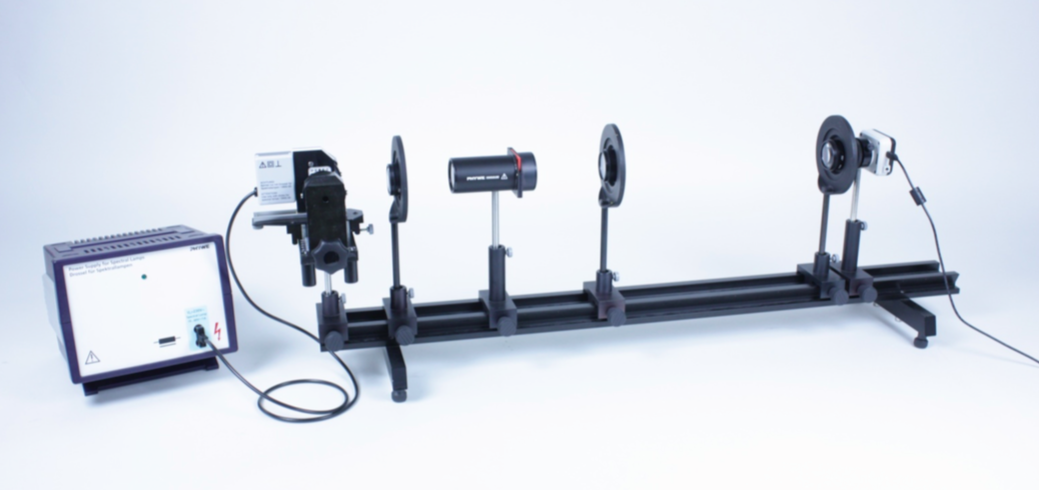Item no.: P2511007
Principle
The “Zeeman effect” is the splitting up of the spectral lines of atoms within a magnetic field. The simplest is the splitting up of one spectral line into three components called the “normal Zeeman effect”. In this experiment the normal Zeeman effect as well as the anomalous Zeeman effect are studied using a cadmium spectral lamp as a specimen. The cadmium lamp is submitted to different magnetic flux densities and the splitting up of the cadmium lines (normal Zeeman effect 643.8 nm, red light; anomalous Zeeman effect 508,6nm, green light) is investigated using a Fabry-Perot interferometer. The evaluation of the results leads to a fairly precise value for Bohr’s magneton.
Tasks
- Using the Fabry-Perot interferometer and a selfmade telescope the splitting up of the central line into different lines is measured in wave numbers as a function of the magnetic flux density.
- From the results of point 1. a value for Bohr’s magneton is evaluated.
- The light emitted within the direction of the magnetic field is qualitatively investigated.
What you can learn about
- Bohr’s atomic model
- Quantisation of energy levels
- Electron spin
- Bohr’s magneton
- Interference of electromagnetic waves
- Fabry-Perot interferometer
Software included. Computer not provided.

